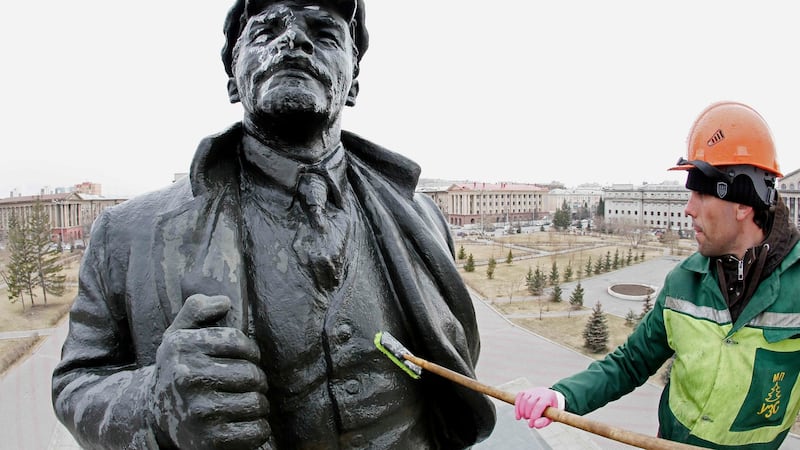As Russia marks the centenary of the 1917 revolution that swept Vladimir Lenin to power, it might be time to give the late leader of the world's first communist state a proper burial.
That’s what a group of Russian parliamentarians thought as they tabled a controversial Bill this week calling for the removal of Lenin’s embalmed body from a mausoleum in Moscow’s Red Square, where it has lain since his death in January 1924.
Many Russians believed Lenin should be laid to rest in accordance with Russian Orthodox Christian traditions, said Vladimir Sysoev, a member of the pro-Kremlin Liberal Democratic Party and one of the authors of the proposed legislation. The timing and manner of the burial should be decided by a government commission.
Gennady Zyuganov, the Russian Communist Party leader, slammed the authors of the Bill as “scoundrels”. Any attempt to remove Lenin’s body from the mausoleum would divide Russian society and risk unleashing violent unrest, he warned.
Debate about Lenin’s burial has frequently surfaced since the collapse of the Soviet Union as Russia grapples to forge a new national identity and come to terms with the turbulent events of the 20th century
Revolution centenary
Interest usually peaks on April 22nd each year – the date of Lenin’s birthday – and is even more intense this year as Russia marks the centenary of the 1917 revolution that swept his Bolshevik party to power.
Vladimir Putin rarely mentions Lenin in public and regards the revolution, which spawned mass violence and cost Russia part of its empire at the end of the first World War, as a historic tragedy.
Yet recent polls indicate that almost half of Russians believe the revolution played a positive role in their country’s development.

About 58 per cent of Russians believe Lenin’s body should be buried, although the majority don’t want the mausoleum removed from Red Square, according to a survey by the Levada Centre, an independent Russian polling agency released this week.
Respondents were divided over whether Lenin should be buried in the Kremlin Wall alongside other honoured figures of the Soviet era or laid to rest alongside his mother in a St Petersburg cemetery.
A committed atheist, Lenin never wanted to be mummified, but ended up having no choice in the matter as his body was laid out in a wooden structure hastily installed on Red Square in the days after he died of a stroke.
Red Square mausoleum
Josef Stalin, the new Soviet leader, then ordered the construction of a monumental mausoleum that, faced with dark red granite and black labradorite, replaced the makeshift tomb in 1930 and became a place of pilgrimage for Lenin worshippers.
Although the cult of Lenin died with the Soviet Union, the mausoleum still draws large numbers of visitors eager for a glimpse of the man who changed the course of Russian history and founded the world’s first communist state.
Preserving the body of Lenin, who lies on a funeral bier dressed in a black three-piece suit, has been a feat of science. Every other year a team of embalmers working in the basement of the tomb carry out “prophylactics” – a procedure that involves sinking Lenin’s remains in a chemical cocktail to prevent decomposition and preserve the natural shape and colour of the deceased revolutionary.
Completing this process in time for Lenin’s 147th birthday this week, scientists concluded that the body was in a “satisfactory” condition and could be preserved for an unspecified long time to come, Interfax reported.
Pressing problems
The Russian authorities were encouraging debate about Lenin's burial to distract public attention from the pressing problems facing the country, said Valery Rashkin, a Communist deputy in the Russian Duma or parliament. "Let's talk about industrial policy, the economy, the way out of the crisis. It's more interesting," he told a press conference at the National Information Agency in Moscow on Friday.
However, Sergei Solovyov, a Russian historian, said parliamentarians had floated the Bill sanctioning Lenin's burial as a "test balloon" amid a campaign to bury the subject of the revolution altogether.
The authorities present everything about the revolution as “bad and destructive”, he said.














